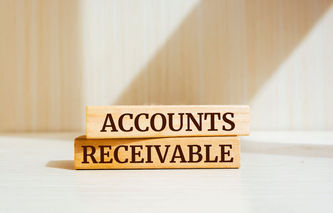Definition
The term accounts receivable forecast refers to a calculation that allows a management to plan for the investment in accounts receivable at the end of an accounting period. The metric takes the company's days sales outstanding and multiplies it by the average sales per day in the forecast timeframe.
Calculation
Accounts Receivable Forecast = Days Sales Outstanding x (Sales Forecast / Days in Forecast)Where:
Days sales outstanding is calculated as the average accounts receivable / (annual revenue / 365).
The sales forecast is the anticipated sales revenue occurring in the period examined, while the days in forecast are the number of days associated with the sales forecast.
Explanation
Liquidity measures allow the investor-analyst to understand the company's long term viability in terms of fiscal health. This is usually assessed by examining balance sheet items such as accounts receivable, use of inventory, accounts payable, and short-term liabilities. One of the ways to understand the amount of cash needed to support accounts receivable is by calculating a forecast for accounts receivable.
Calculating the accounts receivables forecast allows the finance team to understand how much cash will be tied up in accounts receivable at the end of the forecast timeframe, since other potential investments compete for the same funds. The calculation uses the historical value of days sales outstanding (DSO) and multiplies it by the expected sales per day in the forecast period. The result of the calculation is a forecast of the ending balance in accounts receivable.
Example
The CFO of Company ABC was just informed the sales department is going to run a national promotion that's expected to result in a surge in sales revenue in addition to accounts receivable. In the same timeframe, the company is planning to launch a large capital program involving the construction of a new fabrication plant. The CFO is concerned the surge in accounts receivable will consume too much of the cash earmarked for the capital project launch, so she asked her analytical team to provide a projection of the accounts receivable balance at the end of the promotion.
Her team of analysts first examined data for the last twelve months, and found the starting balance of accounts receivable to be $14,756,000 and the ending balance $16,129,000. Total sales revenue in the same timeframe was found to be $154,425,000. Using this information CFO's analyst team calculated average receivables collection period as:
= (($14,756,000 + $16,129,000) / 2) / ($154,425,000 / 365)= ($30,885,000 / 2) / $423,082= $15,442,500 / $423,083, or 36.5 days
Next, the team took a look at the sales forecast of $25,700,000, which is roughly double a normal month's sales, resulting in an average sales per day value of:
= $25,700,000 / 30 days, or ~$857,000 / day
Using this information the team then calculated the accounts receivable forecast as:
= 36.5 days x $857,000 / day, or $31,300,000


.png)

.jpg)


